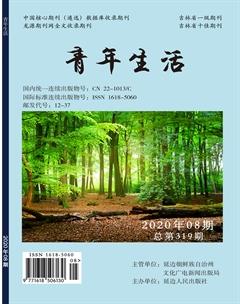Case analysis of Methodology of Western Translation Studies: Since the 1970s
冯笛
Translation Strategies
Peter Newmark deems that text could be categorized into three different types: expressive text, informative text and vocative text.
Expressive text can be found in most literature, authoritative text, personal letters and the like. As Newmark puts it: “The core of the expressive function is the mind of the speaker, the writer, the originator of the utterance.” (Newmark, 2001).
Vocative text provokes the readership to act, to think, or to feel the author's intention other than conveying information. (Newmark, 1988) Language as a human instinct has an embedded tendency to evoke sympathy that is a crucial psychological function linking human psychology and behavior.
Informative text is often written in a standard format with a serious tone. It includes most of non-literal texts, such as journalism,scientific reports, etc. The author's primary intention is to convey their designated information to readers instead of presenting their writing styles and language manners. (Newmark, 1988)
Based on the text types described above, two translation strategies were put up by Newmark, namely, semantic translation and communicative translation.
In semantic translation, the translator attempts to replicate the meaning of the source text in semantic and syntactic structure of the target language. Contrast to semantic translation strategy, communicative translation aims to eliminate obscurities and confusions caused in the translation process to target language readers.In other words, while semantic translation strategy is faithful to the author, communicative translation strategy is faithful to the content.
Case Analysis
Restructure Method
"The 'Restructure' method is restructuring the sentence structure completely on the basis of full comprehension of original meaning so as to fit into Chinese expressive habits. It basically deviates from the level and structure of the original sentence." (Liu Zhaoqing, 1985)
SL: For Cuellar, translation equivalence in his DTM could have immediate impact on the work of the professional translator by helping him/her solve translation problems, on teaching translation as an inter-subjective activity where clear parameters can be established as to what may count as a translation, and on the field of translation criticism as it would allow to avoid simplistic, biased critics of translations.
TL:對于奎利亚尔(Cuellar)来说,他的DTM(Descriptive Translation Method)中的翻译对等可以在以下方面产生直接影响:帮助译者解决翻译问题;在跨学科的翻译教学中,对什么是翻译这一问题确立明确标准;以及在影响翻译批评领域,避免简单、带偏见的翻译批评。
Analysis:This is one of those long sentences that is structured in a sophisticated way. The phrase “immediate impact on” is followed by three objectives, the second of which “teaching translation as an inter-subjective activity” is again comprised by an attributive clause and a subjective clause which made the sentence all the more complicated. By dividing the long sentence into three parts and add colon and semicolons in its Chinese translation, discarding the syntax constraint forced by English language, we can single out the side information from two clauses led by “where” and “what”. Then its possible to combine and transform them into minor sentence in Chinese as “对什么是翻译这一问题确立明确标准”. In this way, the logic rigor and coherence maintain intact through translation process.
Cultural Translation
In the early 1990s, Susan Bassett and Lefever proposed the cultural shift of translation. Since then the relationship between translation and culture is increasingly linked. “Cultural translation” has become a buzz word in both translation studies and cultural studies.
SL: In 1530, Luther wrote the self-promoting and nationalistic Sendbrief vom Dolmetschen (Circular Letter on Translation), in which he criticized Latin, Hebrew and other languages for being full of “stones and stumps”, in contrast to his smooth German writing.
TL:1530年,路德撰寫了带有自我宣传和民族主义性质的文章Sendbrief vom Dolmetschen(翻译通函),在该文中他批评到,拉丁语、希伯来语和其他语言版本的圣经充满了佶屈聱牙的段落,与他流畅的德语版本圣经形成了鲜明对比。
Analysis: This example contains a cultural loaded word that is “stones and stumps”. This phrase is actually a German phrase translated and fitted well in to expressive habits of English language. There is a lot of cultural loaded phrase used the structure “A and B” and are structured in a phonetically similar way such as “ins and outs” “toss and turn” “name and shame” “odds and sods” “ups and downs” etc. In this context, Luthers use of “stone and stumps” refers to those sentences or paragraphs that are in the Latin or Hebrew version of Bible. Luther once compared his German version of Bible and that of the Latin and Hebrew version and made a metaphor: his German version of Bible is like a smooth road extended all the way to God, and the Latin and Hebrew version of Bible are like unbeaten tracks or bumpy roads that are full of ups and downs.
Bibliography
[1] Newmark, Peter. A Textbook of Translation [M]. Shanghai: Shanghai Foreign Language Education Press, 2001:21-34.
[2] Newmark, Peter. A Textbook of Translation [M]. Shanghai: Shanghai Foreign Language Education Press, 1988:15-19.
[3 廖七一. 当代西方翻译理论探索[M]. 南京:译林出版社,2002:124-130.
[4]王宗炎. 纽马克论翻译理论和翻译技巧[J]. 中国翻译,1982(01):11-17.

